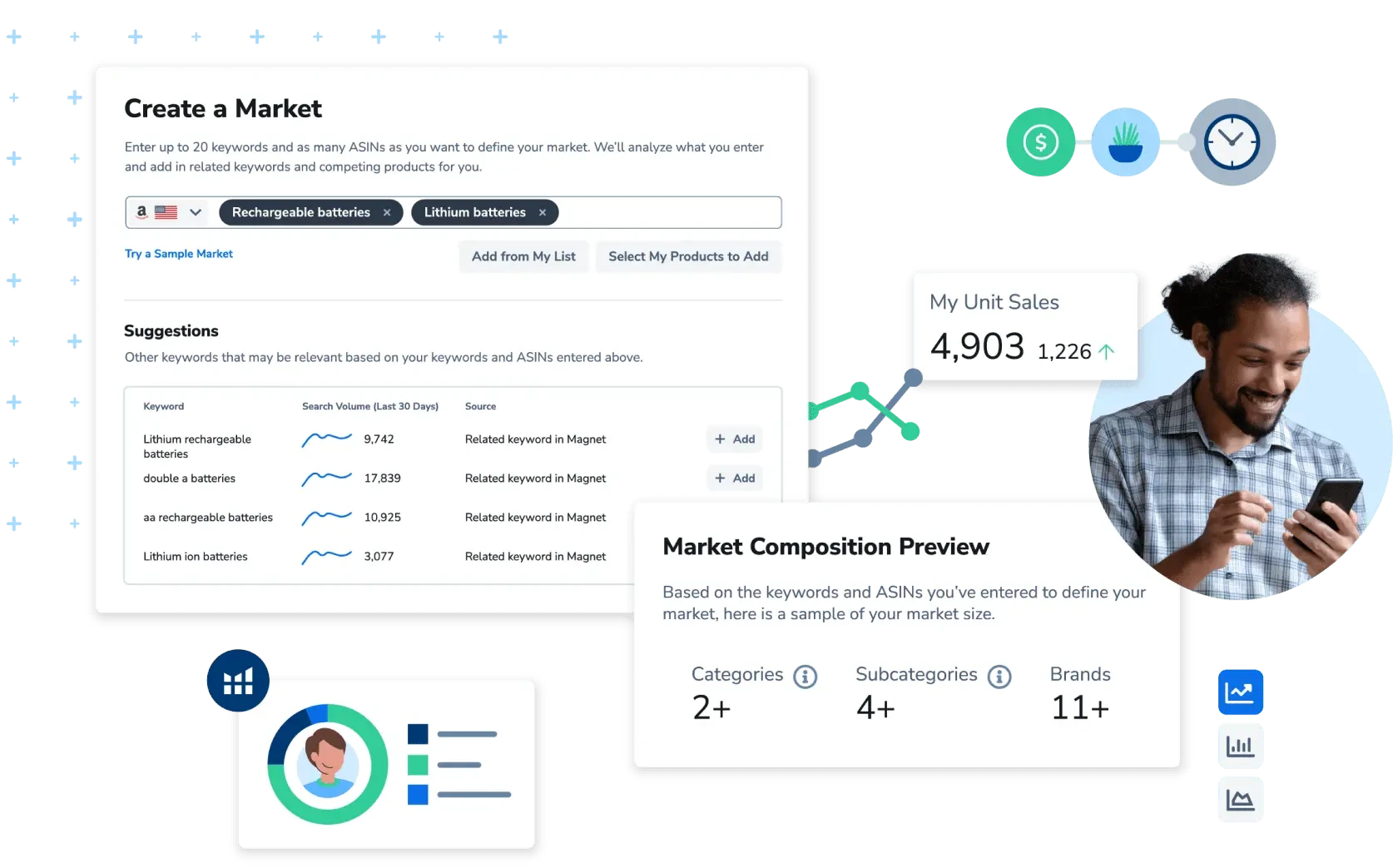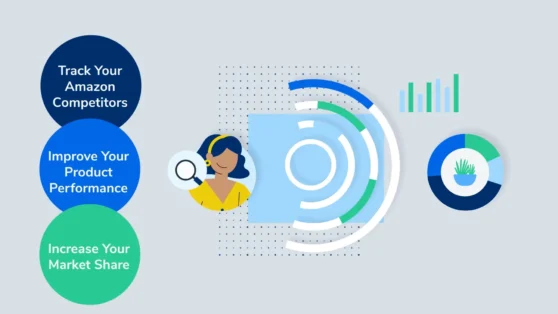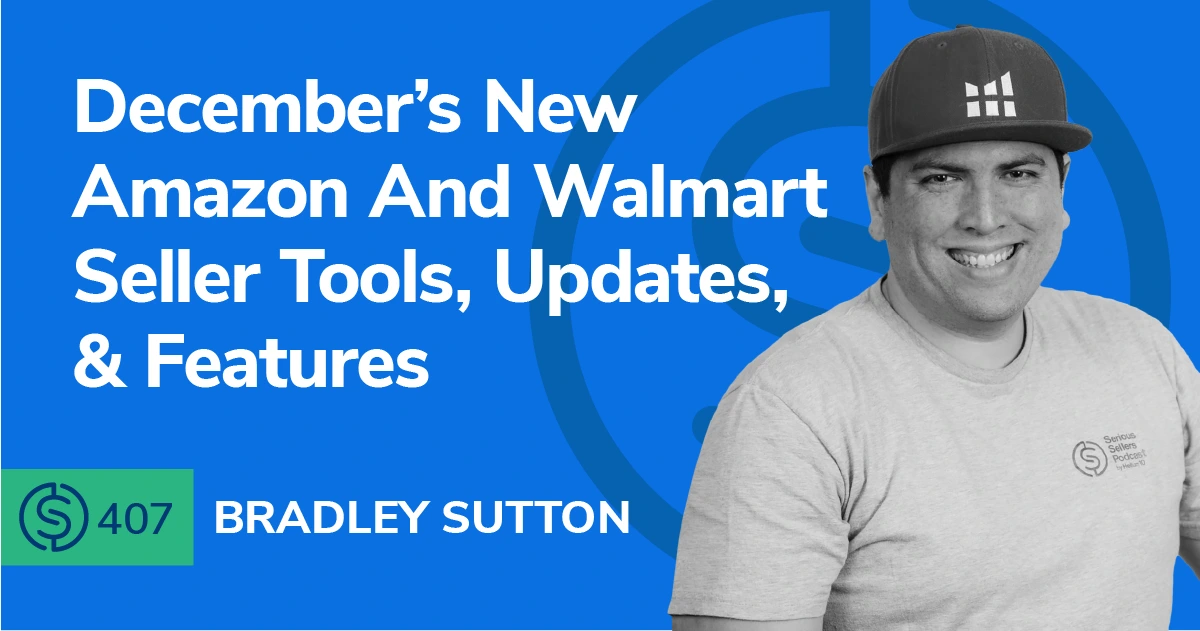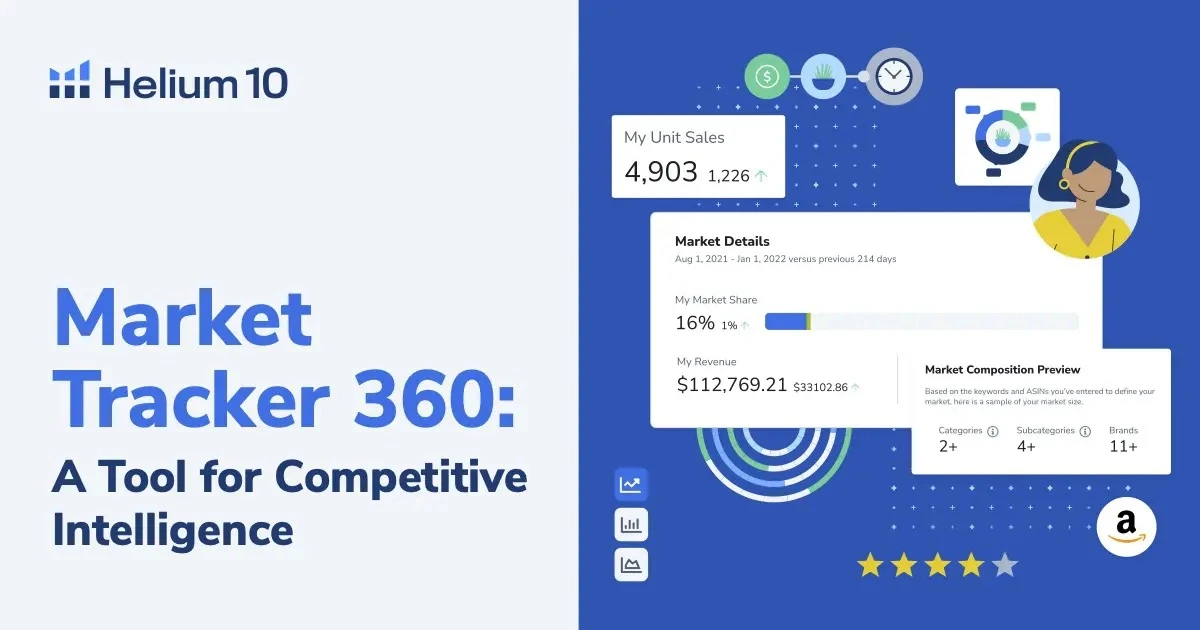Benefits of Market Tracker 360
Work Smarter, Not Harder
- Take control of your Amazon market
- Get a leg up on the competition
- Gain actionable insights to boost your brand

Case Studies: Brainlabs
Without access to this level of data, we are driving in the dark.
Learn how one digital marketing agency used Market Tracker 360 to analyze market trends, save money & boost their ROI.
Explore Brainlab’s Winning Strategy
Get a Competitive Edge and Scale Faster
Advanced tools for sellers looking to rapidly grow their businesses
Helium 10’s Full Suite Pricing
A plan for every seller's experience level
Get Started with Market Tracker 360
The definitive Amazon seller competitor analysis solution for making data-driven decisions.
Sign Up- Keyword Optimization
- PPC Campaign Strategies
- Greater Data Accuracy
Seller Resources from Helium 10
Never miss insights into the Amazon selling space by signing up for our email list!
FAQs
An Amazon competitor analysis is a methodology used to see whether or not your product is competitive with your direct competitors’ products, and whether or not money is being left on the table.
Below are the recommended steps for running a competitor analysis for a specific product listing using only Helium 10 tools:
- In a spreadsheet, compile the following: revenue over time, sales over time, estimated fees, the number of active sellers, review count, and review velocity (Xray)
- In a separate tab, compile the keywords your competitor’s product listing ranks for (Cerebro)
- Compare your keyword market share versus theirs (Market Tracker 360)
- Look at how well your listing is optimized versus your competitors’ listings (Listing Analyzer and Listing Builder)
- Compare the changes in price for the product over time
- Analyze the quantity and quality of their product reviews (Chrome Extension’s Review Insights)
These various data points will enable you to paint an overall picture of how your product stacks up against the competition.
The benefit of conducting an Amazon competitor analysis is that it will enable you to make informed decisions. For instance, if your product is lacking on the keyword targeting side, this will tell you that you should reoptimize the listing. If it still doesn’t perform (because your product lacks reviews and sales history), then you may consider running Amazon Ads and utilize Follow Up for email outreach.
The primary metric to measure when conducting a competitive analysis on Amazon is the keyword performance of your competitions’ listings versus your own. By having a larger presence within Amazon’s search results, you increase your visibility to qualified customers showing purchase intent. Your sales rate is directly correlated to your keyword performance, unless you’re running highly profitable PPC campaigns and driving plenty of external traffic to your listings.
11,498
People signed up last week.
Start Using Market Tracker 360 Today!
Want to try out Market Tracker 360 for yourself? Sign up for a free demo now!
See a DemoThe Details
How to Find & Define Your Competitors on Amazon
To analyze your Amazon competition, it’s important to scrutinize your competitors’ product listings, what their products are priced at, how many reviews they have (and the content of them – this can provide free valuable feedback!) and in general as much as you can about how they are running their Amazon businesses. For example, one of the most important aspects of any competitor Analysis on Amazon is to closely examine the Keywords of the competition. Keywords (and someone’s larger keyword strategy) are the key to getting your product seen and to boost its relevance. You can see the keywords that your competitors are targeting by using Helium 10’s reverse ASIN keyword research tool, Cerebro. This strategy could potentially make you thousands of dollars so you definitely should keep reading! The first thing that you need to do is choose the product that you want to spy on and copy their ASIN. Then, paste that ASIN into the search bar into Cerebro. When analyzing the list of keywords that your competitor is targeting, try to see if you can spot any trends. For example, if you notice that one of your competitors is targeting a lot of 3P seller brand names instead of big names like Nike or Adidas, you can take that same list of brand names and start running video ads on those keywords.
How to Perform an Analysis of Competing Amazon Sellers
To analyze your Amazon competition, it’s important to scrutinize your competitors’ product listings, what their products are priced at, how many reviews they have (and the content of them – this can provide free valuable feedback!) and in general as much as you can about how they are running their Amazon businesses. An important first step in any competitor Analysis on Amazon is to closely examine the Keywords of the competition. Keywords (and someone’s larger keyword strategy) are the key to getting your product seen and to boost its relevance – pay close attention to this. keywords are essential to optimize the product for visibility, relevance, and, ultimately, conversions. Secondly, analyze and track your competitors’ prices. If you can offer a more competitive price-point, you can take away sales from competitors. Thirdly, inspect reviews. Reviews are a large dictator of feedback, and numerous high-quality reviews can often be the difference maker for purchasers. Lastly, pay close attention to the PPC strategy and advertising of your competitors. You can keep track of which keywords they are targeting in order to better optimize your own ad campaigns and capture the most amount of traffic possible.


